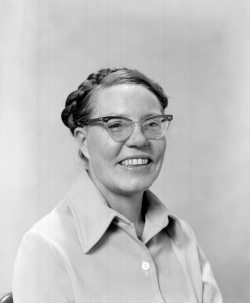
La Jolla is a hilly, seaside neighborhood in San Diego, California, occupying 7 miles (11 km) of curving coastline along the Pacific Ocean. The population reported in the 2010 census was 46,781. The climate is mild, with an average daily temperature of 70.5 °F (21.4 °C).

Scripps Institution of Oceanography (SIO) is the center for oceanography and Earth science at the University of California, San Diego. Its main campus is located in La Jolla, with additional facilities in Point Loma.

Irving John Gill, was an American architect, known professionally as Irving J. Gill. He did most of his work in Southern California, especially in San Diego and Los Angeles. He is considered a pioneer of the modern movement in architecture. Twelve of his buildings throughout Southern California are listed on the National Register of Historic Places, and many others are designated as historic by local governments.

The Museum of Contemporary Art San Diego (MCASD) is an art museum in La Jolla, a community of San Diego, California. It is focused on the collection, preservation, exhibition, and interpretation of works of art from 1950 to the present.

Ellen Browning Scripps was an American journalist and philanthropist who was the founding donor of several major institutions in Southern California. She and her half-brother E.W. Scripps created the E.W. Scripps Company, America's largest chain of newspapers, linking Midwestern industrial cities with booming towns in the West. By the 1920s, Ellen Browning Scripps was worth an estimated $30 million, most of which she gave away.
Hopkins Marine Station is the marine laboratory of Stanford University. It is located 90 miles (145 km) south of the university's main campus, in Pacific Grove, California on the Monterey Peninsula, adjacent to the Monterey Bay Aquarium. It is home to ten research laboratories and a fluctuating population of graduate and undergraduate students. It has also been used for archaeological exploration, including of the Chinese-American fishing village that existed on the site before burning down in 1906.

William Emerson Ritter was an American biologist.

Birch Aquarium is a public aquarium in La Jolla, a community of San Diego, California. It serves as the public outreach center for Scripps Institution of Oceanography at the University of California, San Diego, with over half a million people visiting the aquarium each year.

La Jolla Shores, with its northern part Scripps Beach, is a beach and vacation/residential community of the same name in the community of La Jolla in San Diego, California. The La Jolla Shores business district is a mixed-use village encircling Laureate Park on Avenida de la Playa in the village of La Jolla Shores.

The San Diego-La Jolla Underwater Park is the historical name for a marine reserve that includes the San Diego-Scripps Coastal Marine Conservation Area (SMCA) and Matlahuayl State Marine Reserve (SMR), adjoining marine protected areas that extend offshore from La Jolla in San Diego County on California's south coast.
The La Jolla Historical Society is a private 501(c)(3) nonprofit organization in the La Jolla community of San Diego, California. According to its mission statement, it "celebrates the history and culture of this region along the water's edge through interdisciplinary programs, exhibitions, and research that challenge expectations. It balances contemporary and historic perspectives to create understanding and connection."

San Diego-Scripps Coastal Marine Conservation Area (SMCA) and Matlahuayl State Marine Reserve (SMR) are adjoining marine protected areas that extend offshore from La Jolla in San Diego County on California's south coast. The two marine protected areas cover 2.51 square miles (6.5 km2).

The La Jolla Woman's Club is a women's club in a historic building in La Jolla, a neighborhood of San Diego, California. Designed and built by Irving Gill with assistance from his nephew Louis John Gill in 1914-1915, it is an important example of Gill's modern architectural style, and is listed on the National Register of Historic Places.

Frederick Baker was an American physician and civic activist in San Diego, California. He was the prime mover in founding the Marine Biological Institution, which became the Scripps Institution of Oceanography. He was also a co-founder of the Zoological Society of San Diego and thus of the San Diego Zoo. He was a naturalist and an amateur malacologist.

The La Jolla Recreational Center is a historic recreation center in the La Jolla neighborhood of San Diego, California. It was commissioned by philanthropist Ellen Browning Scripps on property adjacent to her home, and designed by San Diego architect Irving Gill. The center was completed in 1915; Scripps donated it to the City of San Diego the same year. On September 7, 1973, it was designated as San Diego Historic Landmark #86.

Judith Munk was an American artist and designer associated with Scripps Institution of Oceanography. She was inducted into the San Diego Women's Hall of Fame posthumously, in 2008.

Elizabeth Noble Shor was an American historian and scientist. Her entire career was at the Scripps Institution of Oceanography in La Jolla, California. Shor was a noted historian for the institution.

Ellen Browning Scripps Memorial Park, often referred to as Scripps Park, is an urban park in La Jolla, a community in San Diego, California. The park is sited on a sandstone bluff overlooking the Pacific Ocean. It is 5.6 acres (2.3 ha) and has approximately 1,500 ft (460 m) of shoreline and includes La Jolla Cove, Point La Jolla, Boomer Beach, and Shell Beach. The La Jolla Adult Recreation Center, three historic belvederes, and a pavilion are the only buildings in the park.

The Red Rest and the Red Roost, built in 1894, are historic beach cottages overlooking La Jolla Cove in La Jolla, San Diego, California. At one time, they were prime examples of the first-generation California bungalow. Their placement on the National Register of Historic Places in 1976 has not prevented serious deterioration due to neglect.






















